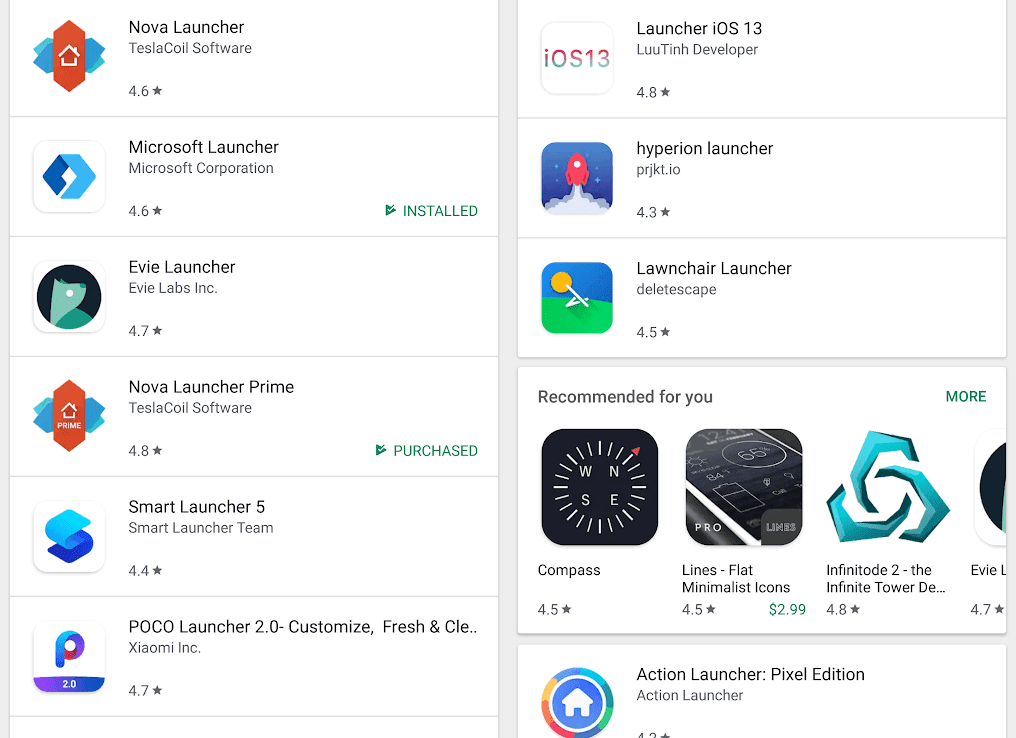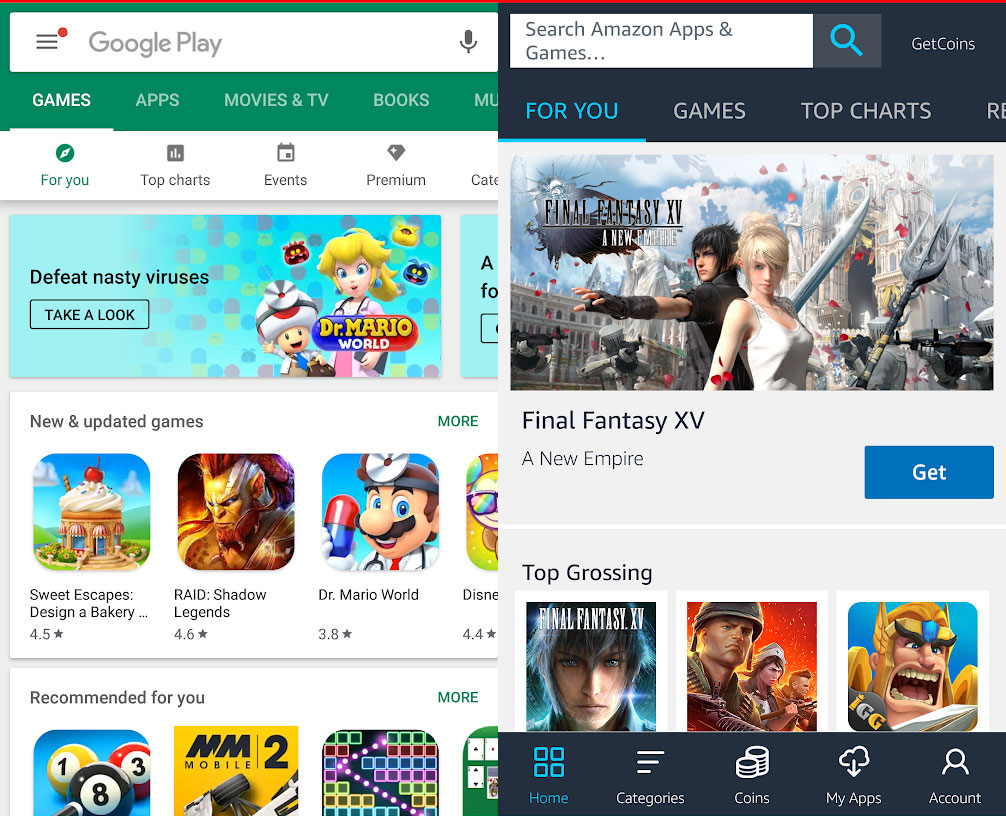There is no doubt that the entire world is split on two when it comes to choosing a smartphone OS. It is either Android or iOS powered device (iPhone). There are other players in the field, but their market share is too small as of now. So, users either pick an Android phone or an iPhone. Android is open-source and a lot of smartphone vendors use it to create a custom build for their phone. Samsung leads the space with a line of its Galaxy and Note devices in the Android phones and tablet section. There are hundreds of other phone and tablet manufacturers who use Android like Huawei, Xiaomi, and Sony. On the other hand, iOS is owned by Apple. It is a closed source operating system and that means that Apple has complete control over it. Well, that doesn’t matter to a lot of users. They just want a phone that is easy to use with great features. So, Apple sells iPhones and iPads with iOS powering their devices.
There are advantages and disadvantages of having just two leading operating systems globally for smartphones. The choice does look limited. But that’s not a topic that we’re going to dive into today. This blog post is about comparing the benefits of Android and how it leads when compared to iOS. We’re not saying that iOS is bad, or people should just pick Android. It all depends on the requirements and how familiar people are with the operating systems. People pick iOS and Android for their own reasons and we have nothing against it. What we are trying to do is list out the areas where Android wins over iOS. There are certainly areas where iOS leads. In this topic, we will focus on Android’s victories. Having that said, let’s begin with our list.
Here are the 10 ways Android is better than iOS:
1. Freedom to Customize
The number one feature that puts Android phone above all is the freedom it gives users. Believe us, freedom is important. With Android, we get the ability to customize our phone that we paid for, the way we want it. We are not restricted to just one app store or one single browser as the default one. We get options. Options to pick. We can refresh the look of our phone with a completely different look as we switch through hundreds of launchers. Moreover, such launchers are available for free. When you change the launcher, you can change the entire look of the home screen and the app drawer. The Google Pixel launcher is a popular one and it is not just for Pixel Devices. Other phone users can download, install and activate the launcher making the OS look like a Pixel device. There is also a launcher by Microsoft and it has millions of users.

For advanced users, custom ROMs can give us the ability to remove bloatware (system apps that we hardly use and aren’t required to run the OS). It changes the entire software that comes with the phone. It is like jailbreaking for iPhone but much more advanced. Alternative firmware providers are out there supporting older phones which are no longer receiving the official Android updates from their vendors. A huge open-source community works on such custom ROMs and they give it out for free. Overclocking is possible and it will enhance gaming. Underclocking is also possible to preserve battery life.
2. App Stores and .APK
On Android, there are more than one app stores. Granted, the Google Play Store is the most popular one and apps must be there to get a decent amount of exposure. But users can install alternative app stores to get the Android apps from somewhere else. Users can also directly download the .apk files for apps and install it directly on to their devices. They don’t have to wait for Google or other app market vendors to push the updates to their device. They can do it on their own if they have set up the correct app installation permissions.

Apple devices are limited to the iTunes store. They can’t download an app directly from the developer and install it on their phones. It is a huge limitation and people with iPhones are completely dependent on Apple to get their apps. It does secure their devices. But if we are downloading .apk files from trusted sources, we won’t have an issue.
3. Desktop/Laptop Interaction
When you connect your Android device to your desktop or laptop using a USB cable, you can use it as an external flash drive. On your phone, there are options to charge your phone, transfer photos and videos, or use it as external storage. With the external storage option, we can browse the contents of the phone’s storage as if we plugged in an external flash drive. No software is required to do it. Apple requires intermediary software like iTunes to be able to access the storage of an iPhone or iPad. We know how iTunes makes it complicated to move the files.
But for Android, it’s just copy/paste. Want to move photos? Copy and paste it. Want to move music? Copy and paste it. Want to copy any other files? Copy and paste it. It is that simple.
4. Hardware Selection
Because Android is open-source, hardware manufacturers like Sony, Huawei, Xiaomi, Samsung and Gionee can get the source and build their own flavor of the operating system. Then they can install it in their devices and release it. What do users get out of it? Well, choice. They are not limited to just different version of iPhones. They can get a phone by Samsung or a tablet by Google. There is competition between the manufacturers of Android devices. It is pushing them to innovate and consumers can pick a phone or a tablet that they like. They can pick features while buying. They can pick looks while purchasing.
5. Price
We don’t even know how much Apple devices cost. But we do know that they have a premium pricing model. Not everyone can afford an Apple device. Some top flagship models come close to the cost of an iPhone. But what people can do is skip such premium versions completely. They can instead pick an Android phone that doesn’t hurt their wallet. Android phones have different price points. There are budget phones, mid-range phones, and premium phones. Buyers aren’t limited to paying premium pricing. They can choose mid-range phones with some fewer features. Most won’t even know the difference. Low price point phones make it possible for people with lower income use a budget touch-based smartphone. There is an Android device for everyone.
6. Split-Screen Multitasking
Android has a feature called Split-Screen Multitasking. As the name suggests, it divides your screen into two vertically. So, two apps are displayed side by side. You can load two apps on the same screen at the same time. That means, on the top, you can have YouTube and below it, you can have a note-taking app. Power users will be able to do a lot with two apps. It is not a necessity but an option that is good to have. iPhone doesn’t have a split-screen and normal users might not require it. But it would have been nice if users were given a choice. Choice doesn’t hurt.
7. Standard Type-C USB
Is your Samsung phone almost out of battery? Maybe, you can borrow a charger from friends at work who use the OnePlus phone. Both devices have the same cable. It is a standard cable called the Type-C USB. It goes in either way (reversible) and is supported by all modern devices. Captain Obvious: Oh, by the way, your Android phone is incompatible with an iPhone’s cable and charger. You can also have one charger for your laptop (with Type-C) and your phone which has Type-C (highly likely). Surprisingly, even the MacBook pro has Type-C support. But nooooo, it is not compatible with an iPhone. iPhone’s need their own cable to be charged and they insist on it. They’re not changing. USB-C has a high data transfer speed, and many features that Android users are benefitting from. All Android devices have the same port.
8. Unlock Options
Android phones have different ways to unlock their phones. While the pattern and pin unlock are common, Android also supports face, eye, and fingerprint unlocking. That’s five ways to unlock a phone. An Android device’s hardware does limit the ways but at least it is out there. We find fingerprint unlocking very convenient. Apple is removing Touch ID. Say goodbye to fingerprints in iPhones. It’s sad. Let’s hope they bring it back. Right now, they are just in love with Face ID.
9. Buttons
There is a back button in Android. An actual button and not a gesture or an app powered button. There is a fixed button on the bottom along with your home and options button. Apple insists on just having one button. While it does vouch for simplicity, it lacks in features. Android users get three buttons that do different things. It is embedded in the hardware. It is always there on the bottom of the screen. That helps a lot in navigation. While apps for iPhones can implement a back button, their position is not consistent. It is on the top-right of the screen which isn’t far if you’re using the phone with one hand. It doesn’t sound like we’re complaining a lot here but having a small back button at the bottom of the screen is really, really helpful. Android is much more ergonomic.
10. OLEDs Screen
Mid-range Android devices have OLED screens and they are actually being used. They have an always-on display functionality. Android brands are beginning to give users the colors and the interactivity features using the always on-screen locks.
Final Words
To summarize, we can say that Android isn’t perfect, but it doesn’t have to be. We know that it lacks a lot in terms of OS updates. The Android market is fragmented, and original equipment manufacturers are ignoring updates for their phones. Only the flagship models are being paid attention to. But there are a bazillion other devices used by millions of users. They are being ignored. Only some get updates, others get it late and some are just left forgotten. While fragmentation has given a choice to the users in terms of budget and features, it has also made it difficult to manage updates and security for all the devices. That is why iPhones are much more secure. This is Android’s compromise. But hey, old iPhones are skipped from updates too.
But think about the benefits that we have. We’ve listed 10 big benefits of Android phones. If your phone is not getting updates, do it yourself. Find a project like Lineage OS, and get the build for your phone yourself. It might be a bit advanced to do but at least there is a possibility. The perfect phone and OS don’t exist. Users must compromise in one feature or another. But with so many choices out there, Android is leading. It gives much more freedom to the user. Those who want the freedom to use the device that they pay for will certainly go for Android.



